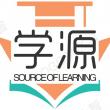
社科学术写作指南(英文版)
全新正版 极速发货
¥ 40.9 6.0折 ¥ 68 全新
库存2件
作者吴杨|责编:王琳
出版社中国科学技术
ISBN9787504690500
出版时间2021-04
装帧平装
开本其他
定价68元
货号31195164
上书时间2024-12-05
- 最新上架
商品详情
- 品相描述:全新
- 商品描述
-
作者简介
吴杨,汉族,生于黑龙江哈尔滨市。2009年获得哈尔滨工业管理学博士,2012年清华博士后出站,现任北京理工人文与社会科学学院副教授,硕士生导师。主要研究领域为教育政策,科技创新。在《教育研究》《公共管理学报》《经济日报》等报刊上发表学术20余篇,并多次被《新华文摘》《中国社会科学文摘》《中国人民书报资料中心》全文转载。近年来出版专著2部。主持国家自然科学基金项目1项、国家自然科学基金青年项目1项、中国博士后科学基金特别1项、中国博士后科学基金一等1项、国家社科基金重大项目中子课题1项。
目录
Preface
Introduction
Part I Brewing of Ideas
Chapter 1 A Dialogue Field to Stimulate Ideas
Chapter 2 From Research Plan to Writing Ideas
Part II The Process of Writing Academic Papers
Chapter 3 The Conception and Design of Writing
Chapter 4 Logical Thinking in Paper Writing
Chapter 5 The Layout and Expression of Paper Writing Ideas
Chapter 6 Language Training and Preparation
Part III Framework Design
Chapter 7 The Framework of Quantitative Analysis Paper
Chapter 8 Qualitative Analysis of Academic Papers
Part IV The Art of Contribution
Chapter 9 Contribution Preparation
Chapter 10 Psychological Expectations and Preparation for Contribution
Part V Common Empirical Research Methods
Chapter 11 Questionnaire Method
Chapter 12 Interview Method
Chapter 13 Case Studies
Chapter 14 Experimental Research
内容摘要
本书为英文版,以科学研究的基本逻辑与方法为出发点,以撰写和发表学术论文的过程为主线,结合作者多年科研工作的实际经验和感悟,为读者提供了可直接参考的研究方法和书面表达技巧。本书还介绍了论文写作过程中的各种影响要素和关键环节,主要涵盖五大部分。第一,思路的酝酿,即论文撰写前的思考与准备。
第二,学术论文的撰写程序,包含从逻辑思维到写作技
巧的规划,引导读者理解构建“提出问题-分析问题-解决问题”的基本学术思维。
第三,学术论文的框架设计,借用大量案例,分别说明定量文章和定性文章的特点。第四,投稿的前期准备、
技巧、退修过程。第五,常用实证验证方法。本书能为初入人文社科专业领域的读者提供学术写作和研究方法上的指导和启发。
主编推荐
对研究生来说,学术论文的写作和发表无疑是一件极其重要的事。怎样把滴水成涓的日常研究组织成写作思路?怎样把艰深的思路表达得有序、有料乃至有趣?怎样打动你的论文评审老师或杂志审稿编辑?如何对待杂志社的退修或退稿,才有助于学术素养的延伸?什么样的研究方法很有可能产出独到见解?观点的碰撞如何变为一段创造性过程?只要找对方法,这一切都不是难事。本书是一本论文写作实操指南,但不会教给你所谓的捷径和取巧之法。吴杨在这本写给自己学生的方法论教材中,结合自身研究和创作经历,以自己和其他学者的已刊学术成果作为插图例证,对论文写作前期的选题、计划制订、构思酝酿,写作过程中的研究方法、体例要求、表达技巧,以及投稿过程中的沟通艺术、投稿的舆论时机、对待各层面退修要求的态度和修改方法,都进行了言传身教般的详细介绍。全书贯穿谦虚严谨、一丝不苟的学术态度,但更重要的是能激活你灵活、创新、自信的学术创造力。全书为英文。Writing and publishing academic papers is undoubtedly an extremely important matter for graduate students. How to organize the dripping daily research into writing ideas? How to express difficult ideas in an organized, informative and even interesting way? How to impress your paper reviewer or journal reviewer? How to deal with retractions or rejections from journals to help extend your academic literacy? What kind of research methods are most likely to produce unique insights? How does the clash of ideas become a creative process? None of this is difficult if you find the right approach. This book is a practical guide to writing a dissertation, but it will not teach you the so-called shortcuts or trickery. In this methodological textbook for her own students, Wu Yang combines her own research and creative experience with illustrations of her own and other scholars' published academic results. And this book provides insights into topic selection, planning, and conception brewing in the early stages of writing a dissertation, research methods, stylistic requirements, and presentation skills in the writing process. The book also provides a detailed introduction to the art of communication, the timing of submission, and the attitude and revision methods for dealing with retractions at all levels. Throughout the book is a humble, rigorous, and meticulous approach to scholarship, and more importantly, one that activates your flexible, innovative, and confident academic creativity. The entire book is in English.
相关推荐
— 没有更多了 —




















以下为对购买帮助不大的评价